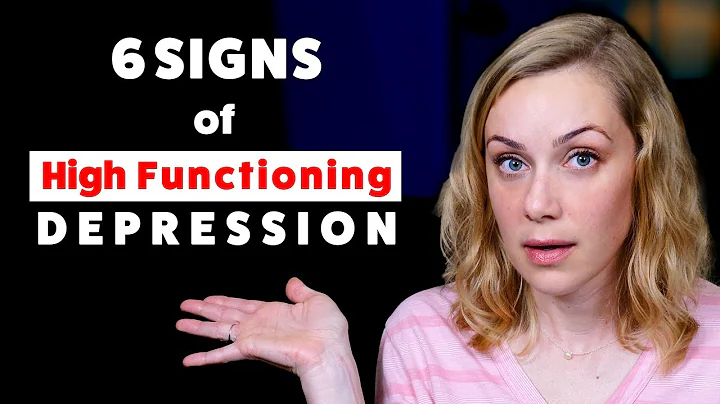Source of this article: Zhishi Shufang
Author of this article: Chen Yudan, associate professor of the School of International Relations and Public Affairs, Fudan University,
After the two world wars, International Relations has broken the ground and has become a forest in a few decades. The main reason why this discipline can grow rapidly is that various international relations theories are thriving. The 20th century is undoubtedly an era of shining stars in international relations theory. However, such prosperity came to an abrupt end when the 21st century arrived. Today, the development of international relations theory shows obvious polarization. On the one hand, middle-level and micro theories emerge one after another, and methodology progresses are changing with each passing day; on the other hand, the innovation of "big theories" is still sluggish, and the core "big problems" - such as the nature of the system and the essence of the actors (the pursuit of force, profit, reason or etiquette) - theorists in the 20th century seem to have discussed enough, exhausting all possibilities, so that the mainstream academic community has almost given up on the continuing exploration of ontology and cognition. But "big theory" is ultimately a temptation that scholars cannot let go.
The "aesthetic turn" and "quantum mind"
If the theory of international relations is to innovate at the macro level, it is necessary to break through the existing scientific framework. There are only two ways. First, let go of science and turn to other schools; second, update science and pursue the frontier. "Aesthetic Turn" and "Quantum Mind" are attempts made in these two directions respectively.
In 2001, the "Millennium: Journal of International Studies) organized an album titled "Imaging and Narrative in World Politics". It was written by many first-class scholars and explored new areas of international relations research from literature, art, drama, film and television, music and other aspects. The outline of the album is from Roland Bleiker, a professor at the University of Queensland in Australia, entitled "Aesthetic Turn in International Political Theory", and the concept of "Aesthetic Turn" was established. This concept is not an empty slogan, but has clear theoretical appeals. Black straightforwardly opposes the "aesthetics" path with the mainstream social science path. In short, the aesthetic path questions the objectivity and cognizability of the real world that people are accustomed to in social sciences at both ontological and epistemological levels. The "aesthetic turn" is to shift the foothold of international relations theory from "politics itself" to "political representation", and explore the understanding and interpretation of politics in the perception of various cultures and arts.
"Quantum Mind and Social Science" is the second monograph written by American international relations scholar Alexander Winter, who brought him a huge reputation, more than ten years after the publication of " Social Theory of International Politics ", which brought him great reputation. Unlike the "aesthetic turn", the concept of "quantum mind" does not completely oppose social science, which can be seen from its title. But similar to the "aesthetic turn", the "quantum mind" is also based on doubts about existing social science research methods. Winter believes that ontologically, empirical social sciences are consistent with classical physics, which people have long been accustomed to; the principle of "causal closure of physics" is also "a basic principle that all social science scholars should agree with." Since quantum mechanics abandons classical mechanics and brings revolutionary changes to physics, then according to this inference, can social sciences based on classical physics also produce revolutionary progress by introducing quantum theory ? Winter explores this in his book.

Quantum Mind and Social Sciences
by Alexander Winter, Qi Haotian, Fang Changping Translation
Shanghai People's Publishing House 2021 edition
In Winter's view, the view that "mind and social life are macro quantum mechanical phenomena" has the effect of "promoting the controversy of social science philosophy" because it questioned the fundamental assumption in empirical social sciences, that is, "social life is bound by classical physical laws." For Winter, the "unexplained anomalies" that exist in the mind or consciousness from the perspective of materialism are like dark clouds above social sciences. Although the writing of this book is only a "guerrilla warfare" that attacks these abnormal phenomena, he believes that after a certain node, guerrilla warfare will surely give way to regular warfare, and the "more realist view of quantum science" will launch a frontal attack on classic mainstream theories.
Whether it is the "aesthetic turn" or the "quantum mind", it is not a minor revision to existing theories, but aims to reconstruct the theory of international relations from the grand perspective of ontology or epistemology. Since both have clear problem awareness and theoretical orientation, can they emerge and inject abundant vitality into the innovation of "big theory"? However, not.
Theory and Theory of Poverty
After the publication of the 2001 album "Imaging and Narrative in World Politics" by Millennium: International Research Journal, the concept of "Aesthetic Turn" and the research on culture and arts set off a craze in the academic community. However, although the "aesthetic turn" began with theoretical concerns, it has increasingly lost its theoretical sharpness in its subsequent development. Its real contribution may have brought richer issues to international relations research rather than promoting the development of international relations theory. In 1999, Winter's "Social Theory of International Politics" caused a thousand waves, and it was not an exaggeration to say that it reconstructed the ecology of international relations theory; in contrast, the publication of "Quantum Mind and Social Science" did not cause much trouble. Some scholars believe that the "quantum mind" based on " pan-mind theory " shows that Winter "is just another 'reincarnated spirit child' of German idealism"; some scholars even pointed out that the book is "Winter's misunderstanding and misuse of quantum theories and concepts and popular terms based on secondary literatures", and what it proposes is "an almost theological view, which is contrary to science."
However, we should not easily assert based on this that "aesthetic turn" and "quantum mind" have no value. The rough and difficult paths of these two paths are not entirely due to their own powerlessness. Rather, they reveal the dilemma of the entire theory and theoretical history of international relations. If we look at it in the long run, we will find that the problems and ways of breaking through the two are in common with the development process of Western academics a hundred years ago. Starting from the first half of the 20th century, the belief in reason and progress established since the enlightenment era of , gradually encountered challenges, and the ideological community increasingly attached importance to and reflected on the domination, control and alienation of technology on people brought about by modernity. Therefore, aesthetics often occupy an extremely important position in various postmodernist schools that take rebellion against the absolution and abstraction of reason. At the same time, in the natural science community, classical physics based on materialism and certainty has also been challenged by quantum mechanics centered on subversive concepts such as uncertainty and quantum entanglement. The latter prompts people to rethink certain long-standing issues, such as the relationship between matter and consciousness, the nature of human existence, etc.
html At the beginning of the 121st century, the proposal of "aesthetic turn" was the fundamental theoretical support of postmodernism. Black clearly wrote that the origin of the "aesthetic turn" is the "challenge of postmodern scholars to the positivist foundation of international political theory" and the academic community's discussion of various cultural and artistic forms when thinking about world politics using a postmodern perspective. Winter's controversial exploration of the "quantum mind" was not due to temporary interest.In his 2003 article "Why the World States is Necessary", he resorted to "HTM1 teleological , which has long been regarded as contrary to science", and built a path to the world countries with human initiative and the struggle to gain recognition as clues; in his 2008 article "Social and UFO", he used Agamben's philosophy as the basis and reflected on the essential attributes of sovereignty, a modern country through the supernatural phenomenon . If he rediscussed the ontological issues that mainstream theories such as matter and consciousness and the essence of the state in a more moderate way in his book "Social Theory of International Politics", then since then, his exploration in this direction has become more radical, and the "quantum mind" is just a natural result.
It is not difficult to find that the "aesthetic turn" and "quantum mind" in international political theory in the 21st century are exactly the same as the changes in Western academics in the first half of the 20th century. It can even be said that it replicates the latter's diagnosis and breakthrough of traditional theories. However, the revolutionary changes in philosophy and natural sciences at the beginning came more from the face of reality, and the "aesthetic shift" and "quantum mind" in international political theory are more reflected in reference to concepts and ideas, which is arguing of being a stepfather. What is revealed behind this is probably the dilemma of the entire theoretical history - the discipline of international relations has almost never had a native theoretical core. From history, politics, philosophy to economics, sociology and even natural sciences, international relations theory has always promoted its own development and formed theoretical breakthroughs by drawing on the ontological and epistemological achievements of other disciplines. Since there is a lack of internal theoretical driving, the theoretical history of the discipline of international relations can only be a mirror or projection of other disciplines, and it is difficult to form one's own discipline consciousness and subject context.
strives to establish the theoretical core of international relations
In summary, we will find a strange phenomenon. In order to break the "end" of international relations theory, the "aesthetic turn" and the "quantum mind" both downplay and even eliminate their own international relations discipline attributes. American scholar Meyer Shapiro, one of the representative figures of the "Aesthetic Turn", publicly declared that he would "forget international relations"; Winter's work was titled "Quantum Mind and Social Sciences", not "Quantum Mind and International Relations", which means that he did not consider theoretical innovation with international relations as the ontology, but instead defaulted to the need to first build a new paradigm of social science and then apply it to international relations.
htmlThe theoretical innovation of Western international relations in the 121st century is certainly not just "aesthetic turn" and "quantum mind", but these two paths most typically represent reflection on the core issues of existing theories, as well as breakthroughs and helplessness after reflection. If the rise and fall of international relations theory are just copies of the development of other disciplines, then before other disciplines make breakthrough progress, we seem to be able to put aside the idea of "big theory" and take middle-level theory and micro theory as our business, or adopt an eclectic attitude to travel between the existing "theoretical islands". In addition, in recent years, "global international relations" has been in the limelight, especially Chinese scholars have made outstanding contributions to theoretical creation. Then, whether non-Western traditions can inject new ontology and epistemology into international relations research and promote the leap of "big theory" needs further investigation. It is crucial whether the 21st century international relations theory can get rid of long-standing descriptions and appropriations, establish its own theoretical core, and even feed back to other disciplines.
Get more content, welcome to follow Haiguo Tuzhi Research Institute











